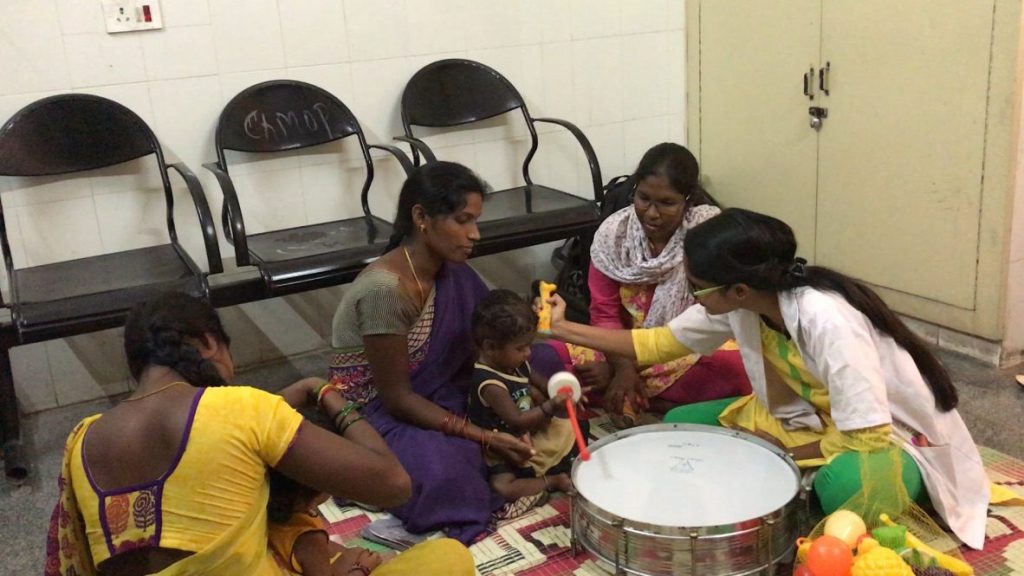One of the main impacts of hearing loss is on the individual’s ability to communicate with others. Spoken language development is often delayed in children with unaddressed hearing loss.
Unaddressed hearing loss and ear disease such as Otitis media can result in significantly adverse effect on the academic performance of children. They often have increased rates of grade failure and greater need for education assistance. Access to suitable accomodations is important for optimal learning experiences but are not always available.
Social and emotional impact
Exclusion from communication can have a significant impact on everyday life, causing the feeling of loneliness, isolation, and frustration, particularly among older people with hearing loss.
Economic impact
WHO estimates that unaddressed hearing loss poses an annual global cost of US$ 750 billion. This includes health sector costs (excluding the cost of hearing devices), costs of educational support, loss of productivity, and societal costs.
In developing countries, children with hearing loss and deafness rarely receive any schooling. Adults with hearing impairment is also have higher unemployment rate. Among those who are employed, a higher percentage of people with hearing loss are in the lower grades of employment compared with the general workforce.
Improving access to education and vocational rehabilitation services, and raising awareness especially among employers about the needs of people with hearing loss, will decrease unemployment rates for people with hearing loss.
Prevention
Overall, it is suggested that half of all cases of hearing loss can be prevented through public health measures.
In children under 15 years of age, 60% of hearing loss is attributable to preventable causes. This figure is higher in low- and middle-income countries (75%) as compared to high-income countries (49%). Overall, preventable causes of childhood hearing loss include:
- Infections such as mumps, measles, rubella, meningitis, cytomegalovirus infections, and chronic otitis media (31%).
- Complications at the time of birth, such as birth asphyxia, low birth weight, prematurity, and jaundice (17%).
- Use of ototoxic medicines in expecting mothers and babies (4%).
- Others (8%)
Some simple strategies for prevention of hearing loss include:
- immunizing children against childhood diseases, including measles, meningitis, rubella and mumps;
- immunizing adolescent girls and women of reproductive age against rubella before pregnancy;
- preventing cytomegalovirus infections in expectant mothers through good hygiene; screening for and treating syphilis and other infections in pregnant women;
- strengthening maternal and child health programmes, including promotion of safe childbirth;
- following healthy ear care practices;
- reducing exposure (both occupational and recreational) to loud sounds by raising awareness about the risks; developing and enforcing relevant legislation; and encouraging individuals to use personal protective devices such as earplugs and noise-cancelling earphones and headphones.
- screening of children for otitis media, followed by appropriate medical or surgical interventions;
- avoiding the use of particular drugs which may be harmful to hearing, unless prescribed and monitored by a qualified physician;
- referring infants at high risk, such as those with a family history of deafness or those born with low birth weight, birth asphyxia, jaundice or meningitis, for early assessment of hearing, to ensure prompt diagnosis and appropriate management, as required;
- implementing the WHO-ITU global standard for personal audio systems and devices. This can be done by governments and manufacturers of smartphones and MP3 players. If adhered to, the standard could help prevent hearing loss due to listening practices that are harmful to hearing; and
- educating young people and population in general on hearing loss, its causes, prevention and identification.
Identification and management
Early detection and intervention are crucial to minimizing the impact of hearing loss on a child’s development and educational achievements. In infants and young children with hearing loss, early identification and management through infant hearing screening programmes can improve the linguistic and educational outcomes for the child. Children with deafness should be given the opportunity to learn sign language along with their families.
Pre-school, school and occupational screening for ear diseases and hearing loss is an effective tool for early identification and management of hearing loss. Screening can be done using the hearWHO app. This app can be downloaded and used by adults to check and track their hearing regularly. It can also be used by health workers to screen people in the community with a view to referring them for hearing testing, when indicated.
People with hearing loss can benefit from the use of hearing devices, such as hearing aids, cochlear implants, and other assistive devices. They may also benefit from speech therapy, aural rehabilitation and other related services. However, global production of hearing aids meets less than 10% of global need and less than 3% of developing countries’ needs. The lack of availability of services for fitting and maintaining these devices, and the lack of batteries are also barriers in many low-income settings.
Making properly-fitted, affordable hearing aids and cochlear implants and providing accessible follow-up services in all parts of the world will benefit many people with hearing loss.
People who develop hearing loss can learn to communicate through development of lip-reading skills, use of written or printed text, and sign language. Teaching in sign language will benefit children with hearing loss, while provision of captioning and sign language interpretation on television will facilitate access to information. Officially recognizing national sign languages and increasing the availability of sign language interpreters are important actions to improve access to sign language services. Encouraging organizations of people with hearing loss, parents and family support groups; and strengthening human rights legislation can also help ensure better inclusion for people with hearing loss.
